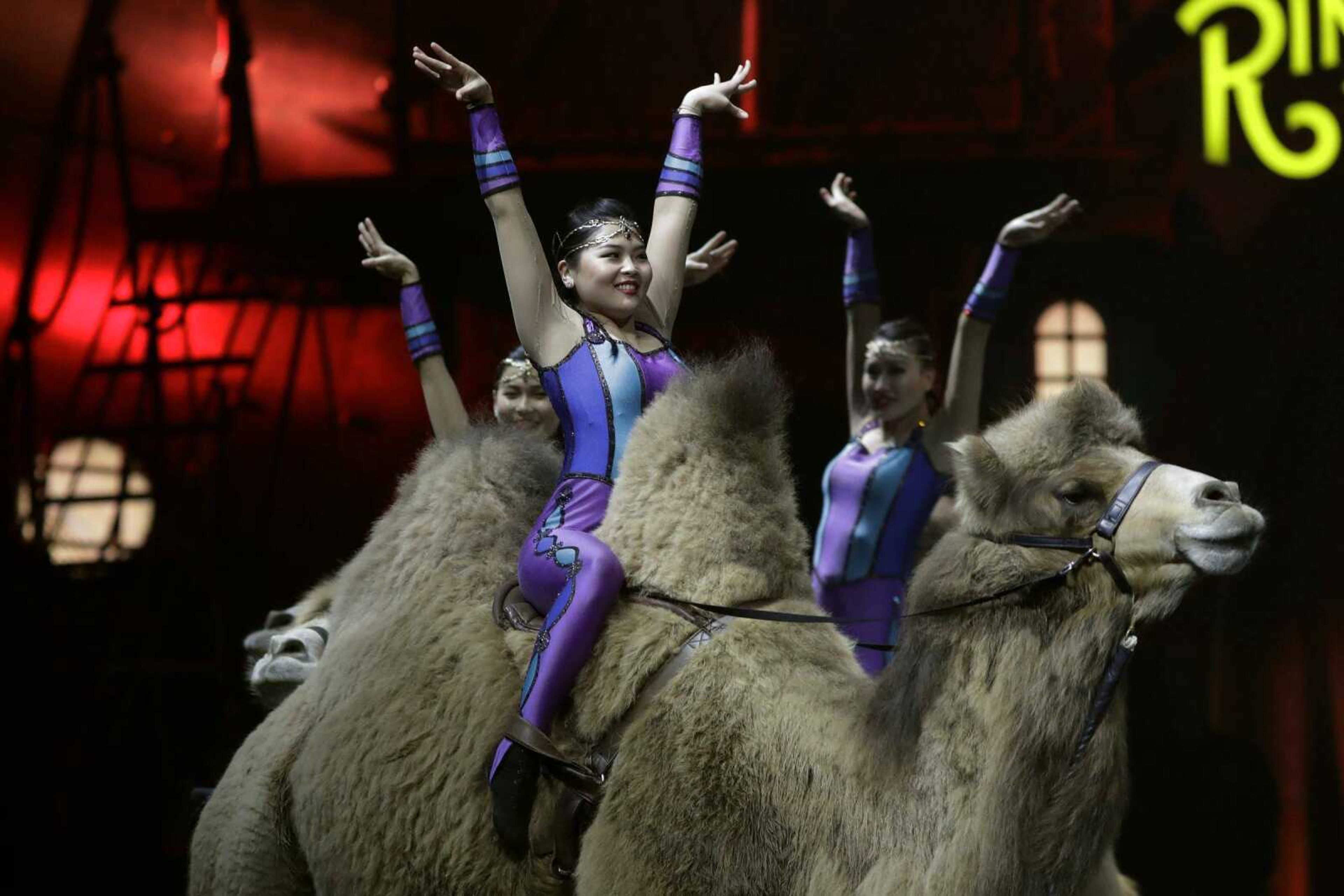SARASOTA, Fla. -- Goodbye to death-defying feats -- daring young men (and women) on the flying trapeze, whip-wielding lion tamers, human cannonballs.
Goodbye to the scent of peanuts and popcorn, the thrill of three rings, the jaunty bum-bum-dadadada of circus music.
Send out the clowns. The Big Top is coming down -- for good.
On Saturday, officials of the company that owns the Ringling Bros. and Barnum & Bailey Circus announced it will close in May, ending a 146-year run that dates to a time before automobiles or airplanes or movies, when Ulysses S. Grant was president and minstrel shows were popular entertainment.
What killed the circus?
There are many suspects: increased railroad costs. Costly court battles with animal-rights activists that led to an end to elephant acts -- and the fact some people didn't want to see a show without elephants.
But mostly, in an era of Pokemon Go, online role-playing games and YouTube celebrities, the "Greatest Show on Earth" doesn't seem so great.
"It's been through world wars, and it's been through every kind of economic cycle, and it's been through a lot of change," said Kenneth Feld, chairman and CEO of Feld Entertainment, owner of the Ringling Bros. "In the past decade, there's been more change in the world than in the 50 or 75 years prior to that. And I think it isn't relevant to people in the same way."
For a long time, the circus was more than relevant -- it was the stuff dreams were made of.
The first circuses were created in Europe; the American twist would be canvas tents that allowed mobile troupes to go to the far-flung audiences of the 19th century.
Phineas Taylor Barnum's traveling menagerie was popular, while the five Ringling brothers performed juggling acts and skits in Wisconsin.
Eventually, Barnum, the Ringlings and another performance-minded businessman named James Bailey pooled their resources and knowledge.
Some of the early performances were merely zoos on wheels and a few human oddities, but over time, the acts became spectacular -- attractions such as Jumbo, touted as the world's largest elephant.
Sprawling companies traveled around America by train, wowing audiences with the scale of entertainment and exotic animals.
Deborah Walk, assistant director of legacy and circus at The Ringling -- circus impresario John Ringling's mansion, art and circus collection in Sarasota -- said the circus' effect on small-town America is often overlooked.
"That wonderful show that you can see in Madison Square Garden crisscrossed the country and ended up in San Francisco. And every place in between saw the same thing," she said.
"In the 1880s, especially, here you had this huge colossal canvas city that tracked across the country. It brought the wonders of the world to your door. You didn't have to go to Africa or Asia to see the animals."
The circus heralded societal changes, she said. Women became performers around the turn of the 20th century (although there would be no African-American ringmaster until 1999 or a female ringmaster until 2016).
When the circus came to town, children dreamed of running away to join it and its ever-changing roster of stars: the sad-faced clown, Emmitt Kelly; the daredevil trapeze act, the Flying Wallendas; Gunther Gabel-Williams, blond-maned and fearless in the ring with the big cats.
The circus was so important to home-front morale, President Franklin D. Roosevelt gave Ringling Bros. special permission to use the rails during World War II.
"The circus is the only ageless delight that you can buy for money," Ernest Hemingway wrote in a three-page essay for the Ringling Bros. program in 1953. "It is the only spectacle I know, that, while you watch it, gives the quality of a truly happy dream."
But as the 20th century progressed, children became less enthralled. Movies, television, video games and the internet captured young minds.
The circus didn't have savvy product merchandising tie-ins or Saturday-morning cartoons to shore up its image.
After 1956, the circus no longer performed under tents, moving to arenas.
The public grew conflicted about animal acts. Circuses without animals -- such as Cirque du Soleil -- were smaller and growing in popularity.
Animal-rights activists put pressure on cities where the circus toured.
Los Angeles and Oakland prohibited the use of bull-hooks by elephant trainers.
Asheville, North Carolina, banned wild or exotic animals from performing in the city-owned stadium.
In 2014, Feld Entertainment won $25.2 million in settlements from groups including the Humane Society of the United States, ending a 14-year legal battle over allegations circus employees mistreated elephants.
The initial lawsuit was filed by a former Ringling barn helper who accepted at least $190,000 from animal-rights groups.
The judge called him "essentially a paid plaintiff" who lacked credibility and standing to sue and rejected the abuse claims.
Connect with the Southeast Missourian Newsroom:
For corrections to this story or other insights for the editor, click here. To submit a letter to the editor, click here. To learn about the Southeast Missourian’s AI Policy, click here.







